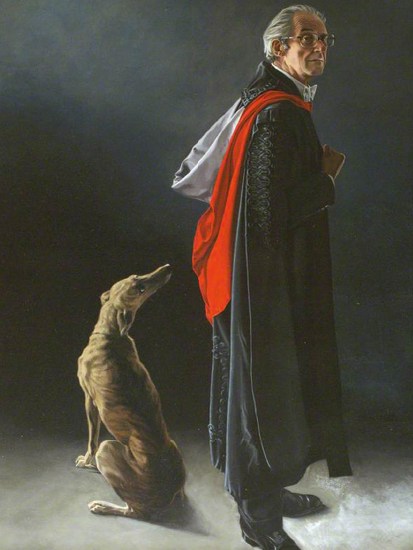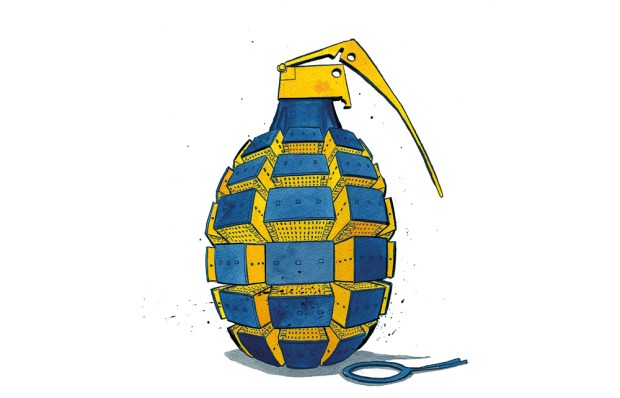I first heard of Raymond Carr, who wrote for this magazine for more than 40 years, when I was in Italy in the army at the end of the second world war, and I had a letter from my sister in London saying that she had met the most marvellous man who was not only very funny but immensely clever, and I must meet him when I got back. By the time I did, Raymond had moved from being a wartime schoolmaster at Wellington College to a being a resident fellow of All Souls, Oxford. He was, yes, both immensely funny and rather grand.
Raymond Carr had been educated at Brockenhurst school, and then in 1941 won a history scholarship to Christ Church, Oxford, having continued his education (as he used to put it) by teaching himself the clarinet and supporting himself by performing in a jazz band. In the 1930s he was an ardent pacifist; then, in the war, he tried to join the army but was rejected on grounds of bad health.
At All Souls he became an expert first in Swedish, then in Spanish history. In the room in which he held tutorials he also entertained a wide circle of friends, both undergraduates and academics. At weekends he would come to London, where there always seemed to be someone who liked him to stay, usually it seemed in a large house off the King’s Road. And in the evenings there would be parties in the Stork Room or the Gargoyle Club in Soho.
But Raymond never let himself be far away from his work. His first publication was on Swedish history; then he turned his attention to what seemed a wider canvas, Spain. His monumental work Spain, 1808–1939 was published in 1966 and was quickly recognised, especially in Spain itself, as one of the major works of Spanish history. It was written in an authoritative and yet straightforward style.
Later in his life, his Spanish biographer, María Jesús González, asked me whether I could explain how Raymond, who came from as it were quite a humble background, before long seemed to know so many — if not all — the most interesting as well as grandest people in England. And then, when he turned to Spain, there he was lunching with the King. I said, ‘Well, there’s no one quite like him.’
One of Raymond’s accomplishments was to teach himself skills — as he had with the clarinet — that would make available to him the styles of life he enjoyed or required. Before marriage, when he was interested in a girl whose family owned extensive lands in Scotland, he learned the intricacies of grouse-shooting and was welcomed on the moors. After marriage — to Sara Strickland, a granddaughter on her mother’s side of the Earl of Wemyss — Raymond learned how to ride, and became a devotee of fox-hunting, an occupation that he and Sara could enjoy to the full when eventually they left Oxford and settled in Devon.
Raymond and Sara had four children: Adam, Matthew, Laura and Charles. Matthew died of cancer in 2010; before that he had become a renowned artist; first as a portrait painter, then as a draughtsman of more experimental work. This, when it reached New York, attracted the attention of Andy Warhol; and when Warhol came to England he asked Matthew if he knew of anywhere he could give a party for his friends and admirers in Oxford. Matthew said yes indeed, his father’s house. So Raymond found himself at the centre of yet another strange and admiring ambience.
And it was always something of an education to travel by car with Raymond. He had an encyclopaedic knowledge of subjects such as birds. Soon after the war my first wife Rosemary and I went on long trips with Raymond and Sara through Spain and Italy, Raymond was apt suddenly to shout, ‘Look! There’s a greater spotted something-or-other!’ and nearly drive into the ditch. When in Majorca we came to a small town called Lluchmayor in the centre of the island, Raymond said, ‘Ah, the great Battle of Lluchmayor!’ I said, ‘I didn’t think there had been much fighting here in the civil war.’ Raymond replied, ‘Not the civil war, the war against Muslims in the 12th century.’
Raymond published a dozen or so more books — on the Spanish Civil War, on Latin.America and on fox-hunting. He himself never seemed to change, remaining a unique figure of authority and fun.
He retired in 1987 and was knighted in the New Year Honours. Sara died in 2004, and in extreme old age Raymond had two faithful friends to keep him company and look after him. He died at home in London on Monday, aged 96.
Got something to add? Join the discussion and comment below.
Get 10 issues for just $10
Subscribe to The Spectator Australia today for the next 10 magazine issues, plus full online access, for just $10.














Comments
Don't miss out
Join the conversation with other Spectator Australia readers. Subscribe to leave a comment.
SUBSCRIBEAlready a subscriber? Log in